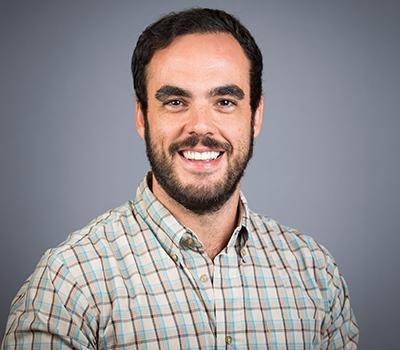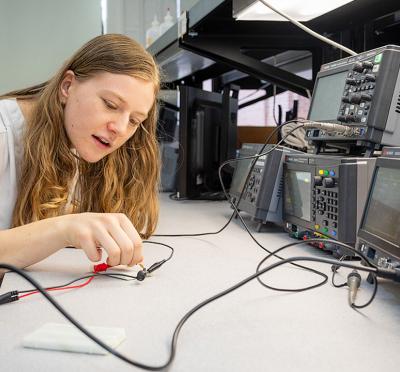The threat of an inevitable earthquake is the uncomfortable truth we all face in the Cascadia Subduction Zone, which stretches from Alaska to California. Because the last major earthquake in the area was in the 1700s, our infrastructure developed without an appreciation and understanding of earthquake resilience.
That means the next major earthquake will likely devastate our buildings, roads, bridges, and utility providers, posing immediate risks for the health and safety of those who live in the region. And later, there will be long-term economic aftershocks.
Although most of us would prefer to ignore the reality, researchers at Oregon State University are facing it. In 2013, the College of Engineering founded a group called the Cascadia Lifelines Program to bring together various groups to find solutions that can improve the performance of critical infrastructure during an earthquake. The group is funded by local water, power, and gas utilities, as well as the Oregon Department of Transportation and the Port of Portland.
In 2016, faculty members Ted Brekken and Eduardo Cotilla-Sanchez became the first experts in power systems to join the group when they became interested in projects to make the electric grid more earthquake resilient. One of Brekken’s research projects is a novel approach to model the specific impacts of an earthquake, with the purpose of improving key components of the grid.
The initial study, supported by the Oregon Talent Council, got the attention of Portland General Electric (PGE), which is currently funding the project and supplying data for analysis.
“What’s really cool about the research is that it is so broad in scope and is applied to a very large and real system,” Brekken said.
The model will help to lessen the impact of an earthquake by preemptively making the grid more resilient, and prioritizing repairs after an earthquake to ensure that critical infrastructure like hospitals and emergency services retain power.
“It’s a second level of understanding,” Brekken said. “Not only what equipment is going to fail, but how does that translate into actual impacts on the complex behavior of the grid? It’s not an easy thing to study.”
Vishvas Chalishazar gained valuable experience working collaboratively with Portland General Electric and consulting companies on his doctoral thesis research.
Despite the complexity, graduate student Vishvas Chalishazar decided to take it on for his doctoral thesis. At PGE he is working with the strategic asset management group which defined the project. He also collaborates with consulting companies: GeoEngineers Inc. provides data on liquefaction and ground shaking, and SEFT Consulting Group specifies the probability of failure for different substation equipment, like transformers, and structures, like control rooms.
“So, my model uses data from the consultants, implements it, then simulates a million earthquakes. The output is an evaluation of which assets are the most critical and the most at risk,” Chalishazar said.
The data is fed to BIS Consulting LLC, to assess the economic impact of various earthquake scenarios. And then, finally, it goes back to the transmission planning group at PGE to prioritize upgrades.
“Vishvas has done a great job,” Brekken said. “It takes the right kind of person to handle working with several bosses. He is basically working as a consultant and an employee, and he is still a student.”
Without the collaboration of PGE, Chalishazar would only be able to model imaginary systems. Using data from an actual electric grid makes it a realistic research pursuit, and the research also has value to PGE and the customers they serve when it is used to make the grid more resilient.
“It’s definitely on the cutting edge,” said Brekken, who has papers in progress with Chalishazar to spread the word about the methodology so others can apply the technology to electric grids that are at risk from earthquakes.
For Chalishazar, the project has been a great opportunity to work closely with an industry partner to help them make better decisions for upgrading their equipment.
“I have always been more interested in doing hands-on research that has an impact on the community that I’m living in because it’s very motivating to have that responsibility,” he said.





